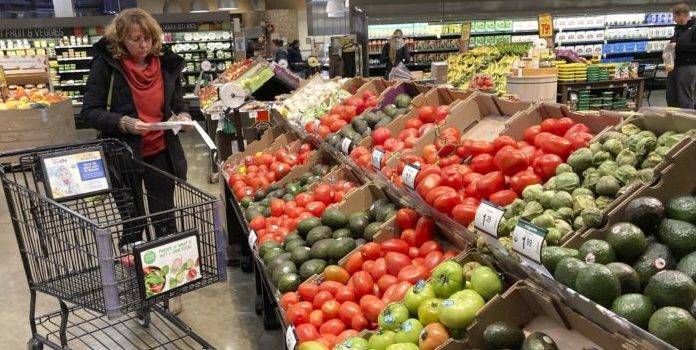(, The Center Square) The U.S. Department of Agriculture’s Food and Nutrition Service will invest $25 million into three states to encourage people on food assistance to buy more fruits and vegetables.
The incentive pilot program would encourage people receiving what used to be called food stamps the ability to buy “healthy foods by providing a coupon, discount, gift card, bonus food items or extra funds when they buy specific foods, such as fruits and vegetables,” according to its website.
“A key barrier to healthy eating is lack of access or enough money to buy nutritious food,” said the USDA site. “Research shows that incentive programs are an effective way to promote healthy eating and improve nutrition security for more Americans.”
However, some critics called the program paternalistic and stated it favors select food industries over others and encourages more government lobbying.
The pilot program comes at a time when spending on the Supplemental Nutrition Assistance Program has increased 98% from 2019 to 2022 to a record $119.5 billion. Some of that increase is attributable to supplemental pandemic payments that are now being phased out.
The USDA has increased the amount of SNAP benefits it provides with the goal of proving recipients more money to buy healthier foods.
The Center on Budget and Policy Priorities stated the 2018 Farm Bill raised the maximum SNAP benefits by 21% effective October 2021 because the cost of a healthy diet had increased over the years.
It said SNAP benefits had been effectively frozen for decades because benefits only increased by the rate of inflation.
Meanwhile, “dietary guidelines, consumption patterns, and constraints on working families had effectively raised the cost for families to secure an adequate diet,” it noted.
“As a result, SNAP benefits fell well short of what households need to ensure a healthy diet, with many running out of benefits before month’s end, which increased their risk of food insecurity (meaning that their access to adequate food is limited by a lack of money or other resources),” said the center.
Veronique de Rugy, the George Gibbs chair in political economy and senior research fellow at George Mason University’s Mercatus Center, said there was a better way to get SNAP recipients to eat healthier.
“I think this is just another version of the paternalism that exists in a lot of the welfare programs where you don’t trust people to make the right decision and the bureaucrats in Washington, D.C. think they know better,” de Rugy said about the $25 million pilot program.
De Rugy called the 98% increase in SNAP spending over the past three years “reckless” and said it would be better to increase the availability of food by reducing regulation.
She said that urban farming had a lot of potential but there were a lot of regulations that were obstacles to people growing their own food.
“We should actually unleash the ability to increase the supply of food rather than constrain it and subsidize it,” de Rugy said.
The Institute for Justice reported in August 2021 that Florida and Illinois were the only two states to have passed “right to garden” laws, which “provide express protection for the right to grow one’s own food.”
Antony Davies, an associate professor of economics at Duquesne University, said a nanny-state government encouraging better eating habits wasn’t the real problem.
“The nanny state is the lesser of the problems,” Davies said.
Rather, it was the unintended consequences of such government interference, which might instead make the situation worse—and more costly.
“Well-meaning people who think they know better what others should be eating flex their regulatory muscles,” he said, noting the starting point in a cascade of bureaucratic entanglements.
“Businesses then co-opt that regulatory muscle for their own benefit,” he continued. “The result is that the nanny-staters feel good about helping people while they’re inadvertently helping businesses at the people’s expense.”
Such a cycle was, in fact, the most reliable consequence of meddling in free markets.
“Any time the government intervenes in markets, it opens a door for businesses to co-opt the power of government to benefit themselves,” Davis said. “Providing more taxpayer money to fund the purchase of fruits and vegetables creates an incentive for nut growers, dairy farmers and meat packers to lobby the USDA to have their foods included as well.”
Davies said that has already happened.
“The controversy surrounding the USDA’s food pyramid arose from agricultural and dairy interests influencing the USDA’s dietary recommendations so as to benefit their industries,” he said.

